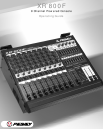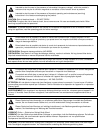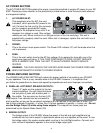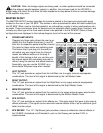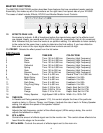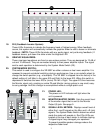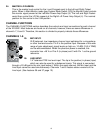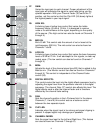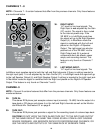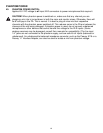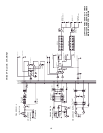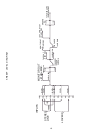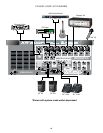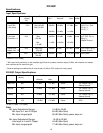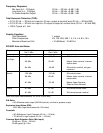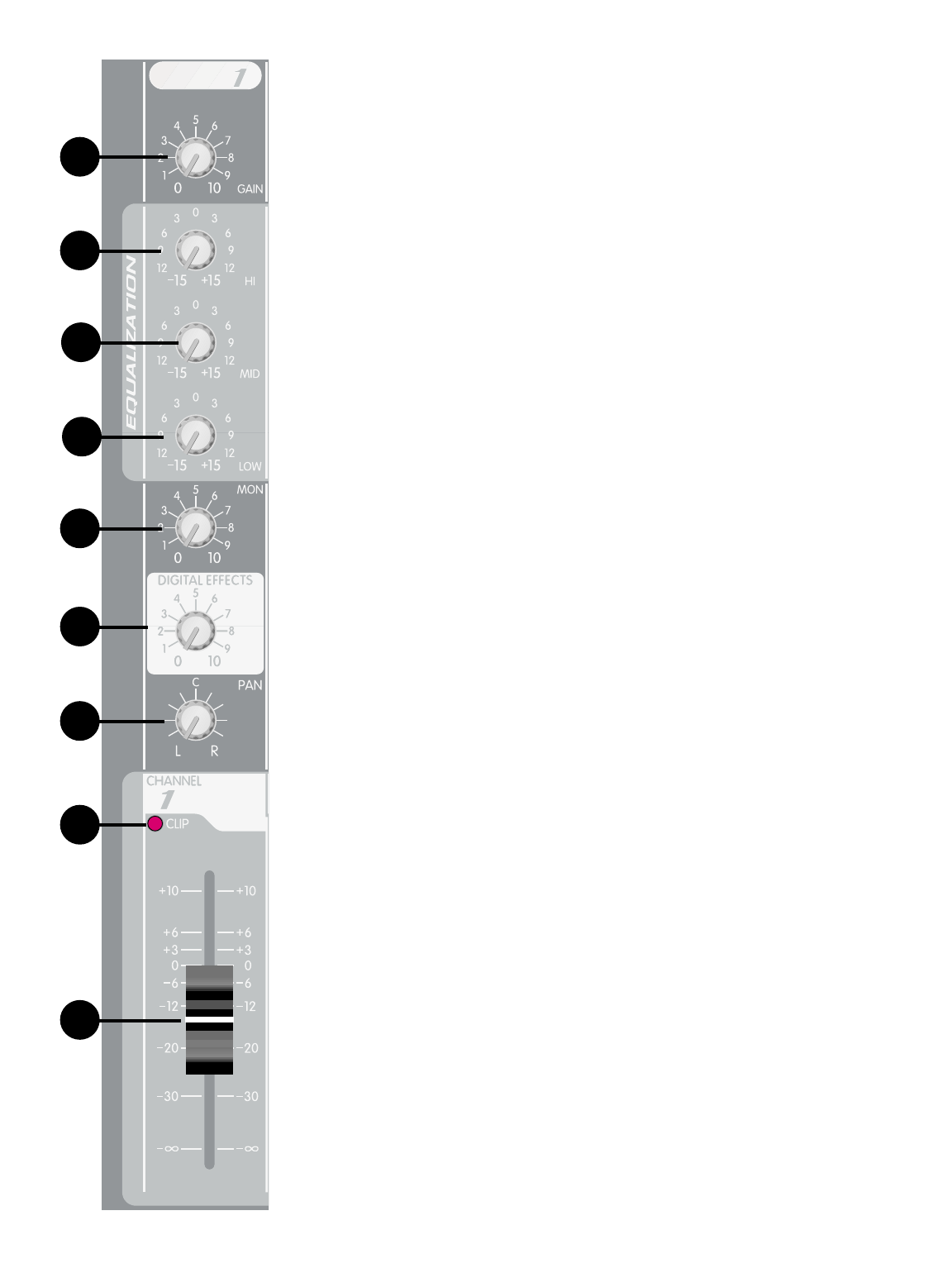
27. GAIN:
Varies the input gain to each channel. Proper adjustment of the
input gain will maximize the signal to noise ratio giving you the
quietest operation. With your Channel Fader (35) set to the “0”
position, set this control so that the Clip LED (34) barely lights at
the highest peaks in your input signal.
28. HIGH EQ:
A shelving type of active tone control that varies the treble
frequency levels ±15 dB at 12 kHz. It is designed to remove
noise or to add brilliance to the signal, depending on the quality
of the source. (The high control can also be found on Channels 7
through 9.)
29. MID EQ:
Mid ±15 dB. This control sets the amount of cut or boost at the
mid-frequency (850 Hz). The mid control can also be found on
Channels 7 and 8.
30. LOW EQ:
A shelving type of active tone control that varies the bass frequency
levels ±15 dB at 70 Hz. It will add depth to thin signals, or clean up
muddy ones. (The low control can also be found on Channels 7
through 9.)
31. MON:
Adjusts the level of the channel signal (pre-EQ) that is added to the
Monitor mix. (The Monitor control can also be found on Channels 7
through 9.) This control is independent of the Channel Fader
control (35).
32. DIGITAL EFFECTS:
This control varies the level into the digital effects processor bus by
adjusting the signal level from the particular channel to the digital
processor. The channel Gain (27) control also affects this level. The
digital effects send is after the channel fader and is therefore
affected by the channel fader setting.
33. PAN:
Sets the channel’s position in the L/R stereo field. In the stereo
Channels (7, 8 and 9) this control acts as a balance control
between the two separate inputs.
34. CLIP LED:
Indicates when the signal input is too strong and signal clipping is
present. A clipped signal may damage your speakers.
35. CHANNEL FADER:
Sets the signal level sent to the Left and Right bus. (This feature
can also be found on Channels 7 through 9.)
9
27
28
29
30
31
32
33
34
35



